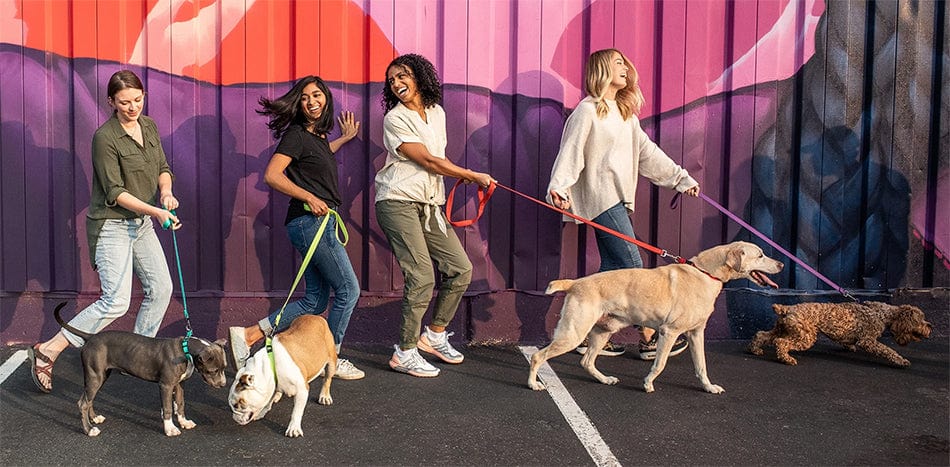Your cart is empty. Let's fix that!


In the wild, dogs live together as packs, and establish a social structure within the group called a dominance hierarchy. This dominance hierarchy maintains order and reduces conflict among pack members. Dogs also establish territories, which they may defend against predators or competitors. These deep rooted instincts affect their behavior when a new dog is introduced to their household. Getting the introduction right is crucial to the success of a paw-sitive relationship between your dog and your foster. Fostering is a great way to see if your resident dogs would get along with a second dog.
If you have more than one resident dog in your household, it may be best to introduce the established dogs to the foster one at a time. Two or more dogs may have a tendency to gang up on the new kid. This guide will help you learn how to introduce a foster dog to your dogs:
The shelter is the perfect place to introduce your dog to your new foster before bringing them home. It’s a neutral meeting place, which makes it easier to establish a rapport between your dog and the new foster. Each dog should be handled by a separate person. Once you bring the foster home, keep both dogs on a leash and do not leave them together unsupervised until you have seen how they will interact in this new setting. The key is to go slowly and keep a watchful eye until both animals are comfortable with each other.
The dogs will likely begin their interaction by sniffing each other. Use a light tone of voice to reassure them that everything is alright. Continue positive reinforcement with yummy treats and calming voices.
Body language is one of the easiest ways to judge how the interaction is going. If ears are down, tails are tucked down or stiff, faces are stiff, or lips are pulled back, it’s a bad sign. Oppositely, if their ears are upright, tails are relaxed and mobile, and faces are relaxed, things are looking good! Another good sign is the“play-bow,” which is when one dog crouches with their front legs on the ground and their rear end in the air. This is an invitation to play that usually results in friendly behavior from the other dog.
The adoption organization will often provide necessities for you that include:
You will also need a crate or baby gate to separate your foster from your resident dogs.
For the first two weeks (sometimes longer), your foster dog’s life must be kept simple to allow them to acclimate. Since dogs can be very territorial, it’s important to establish what belongs to each dog. Each dog should have separate crates, separate food and water bowls, and separate toys.
Dogs are particularly territorial with their food. They can become aggressive if they feel the threat of another dog stealing their food. Because of this, it’s best to feed your dog and your foster in two separate areas of the house to avoid any food-motivated conflicts.
As is true with introducing foster dogs to your resident dogs, there is also a suggested process for introducing a foster dog to a cat household, as well as bringing a new kitten home.